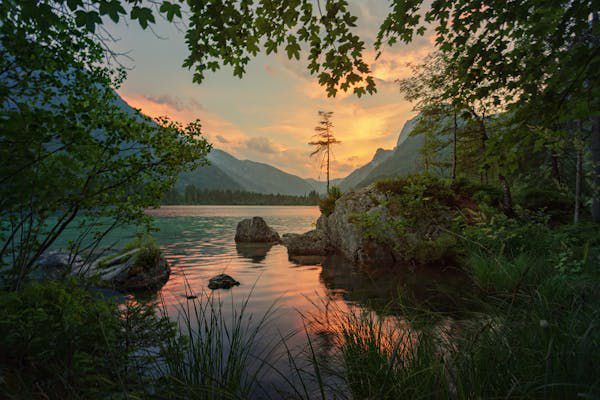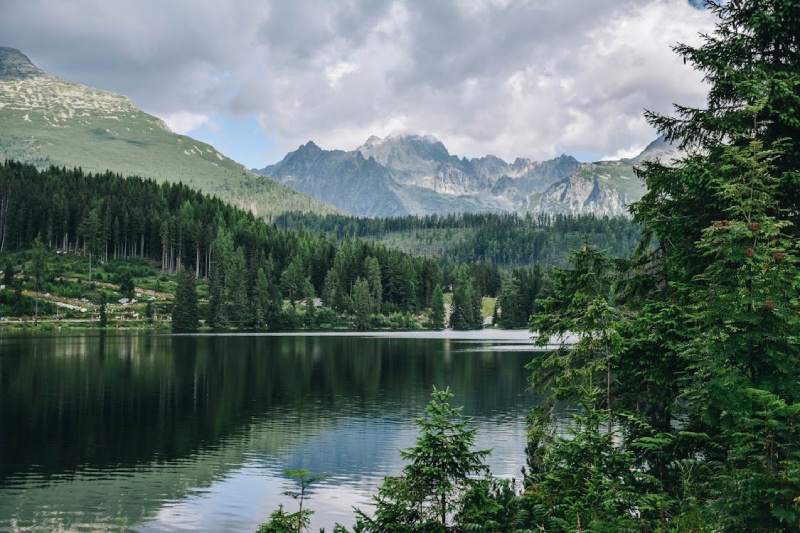Lakes, those glistening bodies of water nestled amongst mountains or sprawling across plains, might seem like temporary features. After all, shouldn’t all that water eventually seep down into the ground? The answer, surprisingly, is no. Lakes have a fascinating way of maintaining their levels, thanks to a complex interplay of geological formations, vegetation, and even human activity.
The Formation of Lakes
Lakes come in all shapes and sizes, but they all share a birth story. There are several ways a lake can form, but some of the most common include:
- Glacial scouring – massive glaciers carve depressions in the landscape, leaving behind basins that fill with water after the ice melts. Lake Michigan, one of the Great Lakes in North America, is a prime example.
- Volcanic activity – volcanic craters or depressions created by lava flows can collect rainwater and form lakes. Crater Lake in Oregon, a stunning example, rests within a collapsed volcanic cone.
- Damming – natural processes like landslides or even fallen trees can create dams across rivers, forming lakes behind them.

Understanding Lake Hydrology
The key to understanding why lakes don’t simply seep away lies in their hydrology, the study of water flow in relation to a specific area. Lakes maintain a balance between incoming water and outgoing water.
- Inflows – lakes are fed by various sources, including:
- precipitation – rain and snowfall directly onto the lake surface contribute significantly. Lake Titicaca, high in the Andes mountains, receives most of its water from precipitation;
- streams and rivers – these freshwater arteries deliver water from surrounding watersheds. The Nile River is a major source of water for Lake Victoria, Africa’s largest lake;
- groundwater – water can seep from underground aquifers into the lake bed, keeping water levels stable.
- Outflows – lakes also lose water in several ways:
- evaporation – especially in hot climates, a significant amount of water escapes into the atmosphere as vapor. The Dead Sea, with its high salinity and scorching temperatures, loses a substantial amount of water through evaporation;
- infiltration – aportion of the lake’s water can percolate through the bottom sediments, replenishing groundwater supplies;
- outflow rivers – many lakes have rivers or streams flowing out of them, carrying water away to other bodies of water or ultimately to the ocean. The Great Lakes of North America are a classic example, connected by a series of rivers and ultimately draining into the Atlantic Ocean through the St. Lawrence River.
The key is that these inflows and outflows tend to reach a state of equilibrium. The amount of water coming in balances the amount going out, keeping the lake level relatively stable over time.

The Role of Geology
The underlying geology plays a crucial role in how a lake interacts with water. Lakes with basins formed in solid, non-porous rock, like granite, will lose minimal water through seepage. These “tight” basins act like giant bathtubs, allowing the lake to maintain its level. Basins formed in porous rock, like sandstone, may allow some water to seep out. However, the balance between inflows and outflows usually prevents the lake from disappearing altogether.
The Importance of Vegetation
The plants around and within a lake play a surprising role in maintaining its health. Trees and shrubs lining the shoreline hold soil in place, preventing erosion that could increase sediment entering the lake and reducing its capacity. Water lilies and other submerged plants help absorb nutrients and stabilize the lake bed, further preventing excessive erosion. Healthy vegetation around a lake promotes a healthy water balance.

Human Impact on Lakes
Our actions can significantly influence lake health. Excessive withdrawal of water for irrigation or drinking can disrupt the inflow-outflow balance and lead to falling lake levels. Runoff from agriculture and industry can contaminate lakes, impacting water quality and aquatic life. Sustainable water management practices and pollution control are crucial for maintaining healthy and vibrant lakes.
Conclusions
Lakes are not just beautiful bodies of water; they are vital ecosystems teeming with life. Understanding the delicate balance of inflows, outflows, and the role of geology and vegetation is essential for protecting these precious resources. By being mindful of our impact, we can ensure that lakes continue to grace our landscapes for generations to come.





